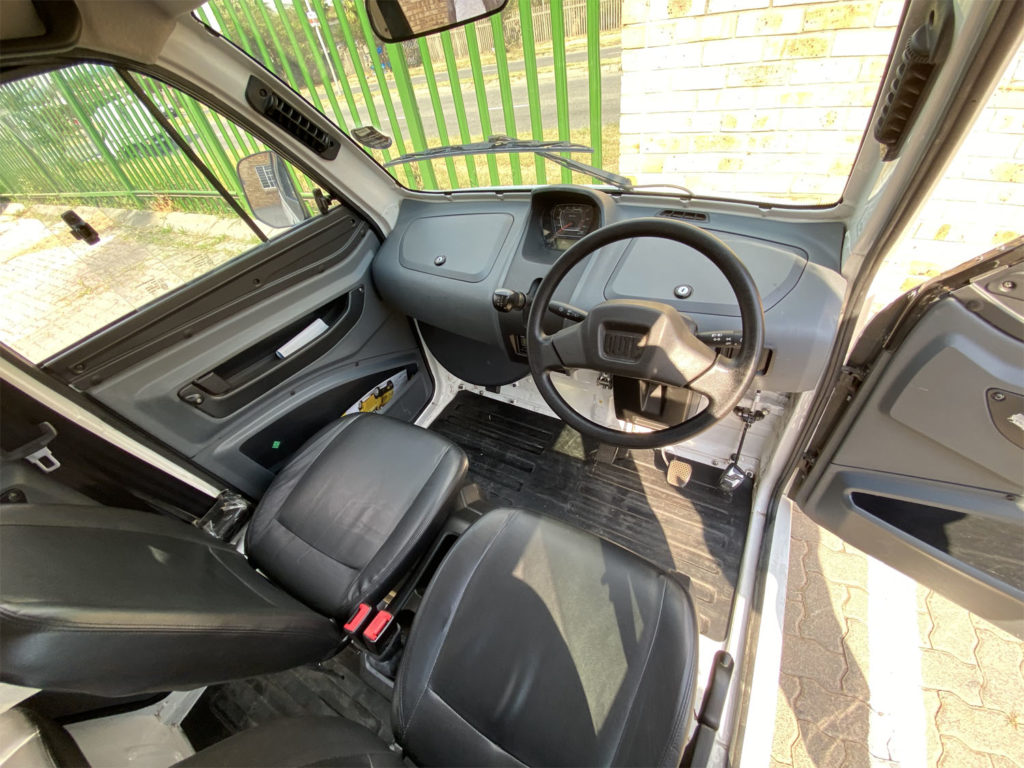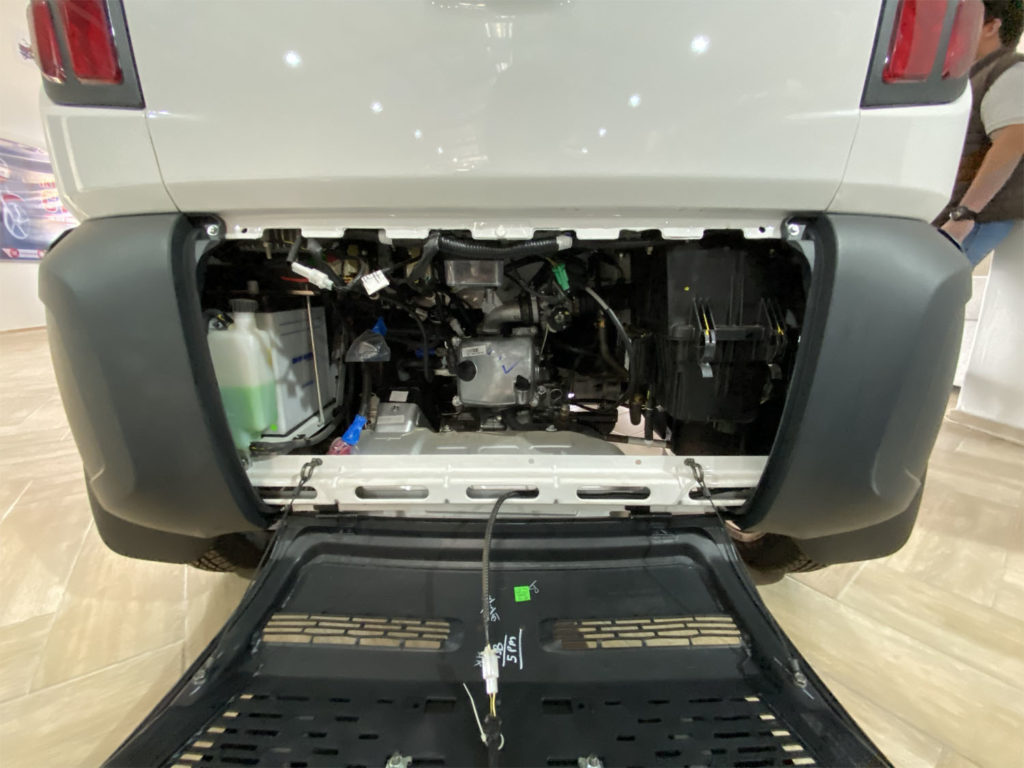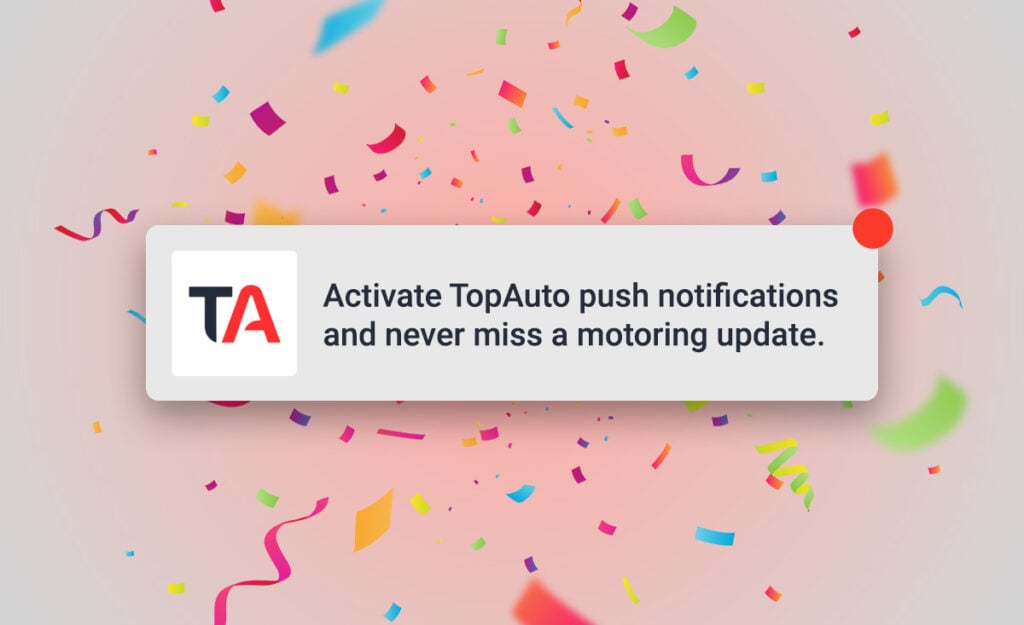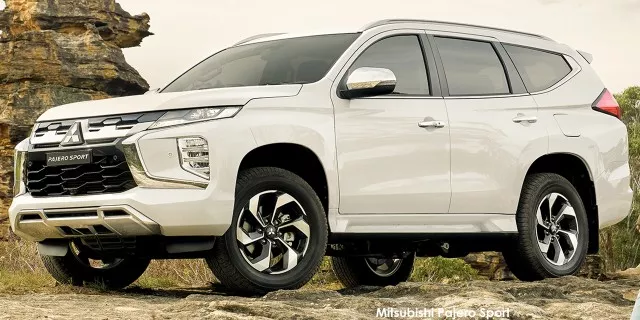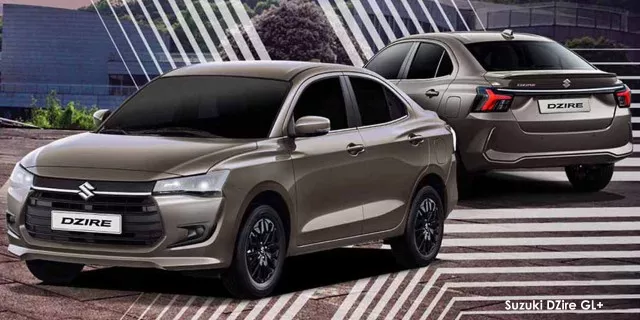
The Eleksa CityBug recently became South Africa’s cheapest electric car, at a starting price of R230,000.
This puts it up against the likes of the VW Polo Vivo and Toyota Starlet in terms of price.
However, with price out of the equation, the CityBug really only has one four-wheeled competitor – the R75,000 Bajaj Qute.
Despite the R155,000 price difference – and different ways of providing power – these compact cars serve a similar purpose.
Interior
As expected, the Eleksa offers many additional niceties for its higher asking price when compared to the Bajaj.
Both feature a generic-looking plastic dashboard, with the Qute getting a central speedometer, an AM/FM radio with USB input, horizontally-sliding windows, and two lockable glove boxes.
In contrast, the Eleksa provides a digital instrument cluster, air conditioning, central locking, electric windows, a reverse camera, and an Android tablet infotainment system with Bluetooth and Google Maps.
Both feature four artificial leather seats, too, and both have foldable rear benches that considerably increase cargo capacity. With these seats down, the CityBug carries up to 300kg of cargo.
The Qute’s maximum cargo capacity is rated at 850 litres – although there is no official answer as to the maximum weight of the load it can carry.
With a 20kg front trunk and 40kg roof rack capacity, however, it should not be far off.
Performance
Performance-wise, these cars are at the lower end of the spectrum – and purposefully so.
The CityBug sports a 9kWh battery and 4kW electric motor, allowing a top speed of 55km/h (amended from 60km/h) and a maximum range of 100km – which can be upgraded to 200km.
A full charge is then expected to cost around R15, said Eleksa.
The Qute is equipped with a 216cc petrol engine that puts out 9.7kW and 18.9Nm, paired to a five-speed sequential gearbox.
This is good for a top speed of 70km/h, while its 8-litre fuel tank provides a range of 250km.
At the current inland rate of R19.61 per litre of Petrol 95, the Qute will cost R157 to fill.
Although the outputs vary, the maximum scaleable incline for both these cars is pegged at 11.3 degrees.
At 2,752mm long, 1,312mm wide, and 1,652mm tall, the Bajaj is then about 2cm shorter and narrower than the Eleksa, but 1.3cm taller.
The Qute also weighs 50kg less than the CityBug, at 400kg.
Drive
I am in a unique position to have driven both the Qute and CityBug before, and regardless of propulsion method there is little separating these vehicles in terms of driving feel.
The CityBug is definitely a more refined car, with its tiny electric motor providing a quick start off the line thanks to instantaneous torque – while only emitting a soft hum while driving.
The Qute’s petrol engine under the rear seat makes the cabin much more noisy, and the small motor pushing around a comparatively heavy load makes it more sluggish.
With your eyes and ears closed, however, they don’t feel very different.
The steering columns register the smallest movements, and the short wheelbase makes turning incredibly direct and abrupt – not unlike driving a tall go-kart.
You can give top speed a go in both, too, but if you don’t have a few blocks of straight, flat, open road, the odds of reaching it are low.
Price
The Eleksa CityBug has a South African starting price of R230,000.
The Bajaj Qute has a South African price of R75,000.










